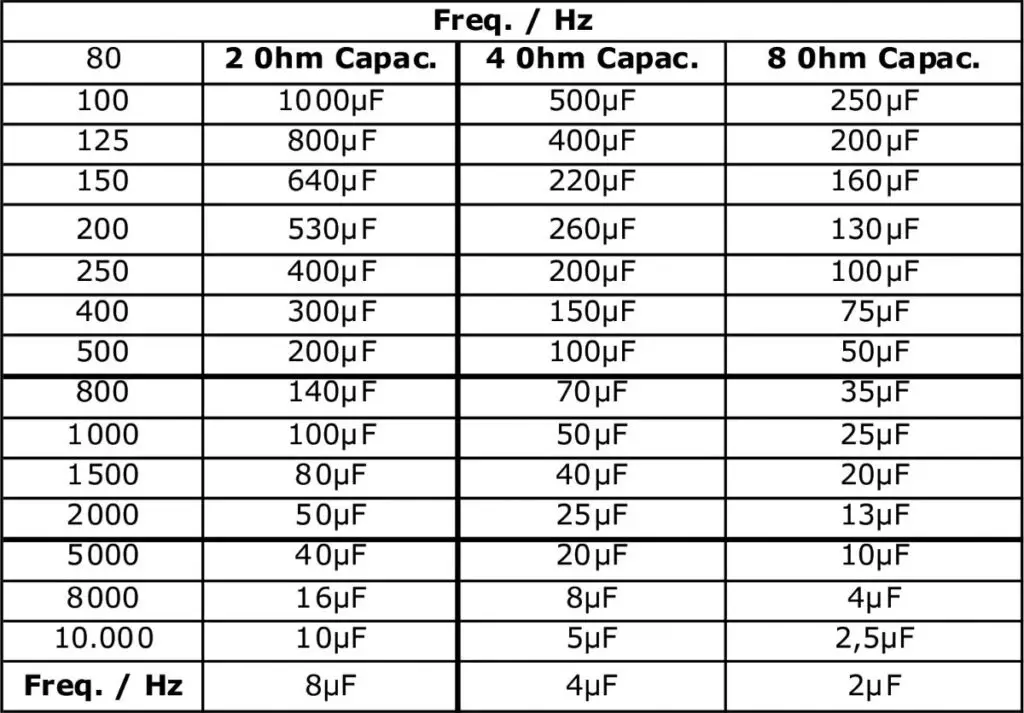What capacitor value you should use for the tweeter?
Experts recommend adding a capacitor in the positive line to the tweeter as a crossover, ranging from 0.47mfd to 1.5mfd. The lower the value of the capacitor, the greater the crossover will be, and the tweeter will sound quieter. If the tweeter is still too strong after experimenting with various capacitors, try adding a 1-ohm resistor in series with the capacitor and experimenting with various capacitors again.
Table of Contents
Do you believe that your existing capacitor values may not be ideal to use for the tweeter? If you want to know the recommended value capacitor for the tweeters, the information below will prove to be extremely useful.
Capacitor Chart
In regards to which capacitor value size to utilize, the most common kind is rated at 500 UF since it inhibits bass frequencies below 100 HZ for 4-ohm tweeters. You can utilize the graphic chart given in this how-to article to determine the appropriate frequency you want to block off, as well as the cap rating you’ll need in order to do so.

When you need to replace automobile tweeters in most cars, these instructions/recommended values will come in handy.
Only one cap needs to be placed on the positive terminal. If you use one for both connectors, the high frequencies will be fully filtered off, and no sound will come out of the tweeter. So don’t try it assuming the tweeter will be more protected; it won’t.
As far as the capacitor value to use for the tweeter is concerned, experts recommend adding a capacitor in the positive line to the tweeter as a crossover, ranging from 0.47mfd to 1.5mfd. The lower the value of the capacitor, the greater the crossover will be, and the tweeter will sound quieter. If the tweeter is still too strong after experimenting with various capacitors, try adding a 1-ohm resistor in series with the capacitor and experimenting with various capacitors again.
I’d begin with 1.5uF, which corresponds to 1.3 kHz. It may sound high, but at 5 kHz, the Fs for that tweeter are quite high. 1.5uF would drop you 6dB just above resonance, which seems about right to me.
Why Do I Need to Use a Capacitor For Tweeter in the First Place?
It is very important to address this first because it is a very genuine question that many people are likely to ask.
Only if you are lacking an inline crossover box dividing the frequencies should you be worried about protecting a car tweeter. If you’re linking it directly to the car audio or an external amp, it’s best to add a capacitor to the vehicle tweeter as soon as practical. This can also be applied to other sorts of comparable speakers, like horns, or to anything that operates at a frequency higher than 10,000 kHz.
